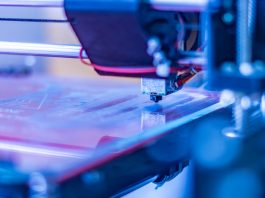A consortium of Russian scientists has developed an innovative method that enhances photoluminescence in silicon, potentially advancing microelectronics.
The research, conducted by researchers from Skoltech, the RAS Institute for Physics of Microstructures, Lobachevsky State University of Nizhny Novgorod, ITMO University, Lomonosov Moscow State University, and A.M. Prokhorov General Physics Institute, has devised a novel strategy that boosts the capacity of silicon – an infamously poor emitter and absorber of photons.
As the majority of modern electronics contain silicon, this improvement could revolutionise the next generation of microelectronics through the enhancement of photogenic integrated circuits.
The group’s research is published in the journal Laser and Photonics Reviews.
Throughout the last 80 years, silicon has become the conventional material used to fabricate microchips; the commonly used method to create a vast array of digital microcircuits is complementary metal-oxide-semiconductor (CMOS) technology. However, significant heat release as a result of the high-density elements in CMOS circuits has prompted scientists to rethink their strategy, with the technology seemingly reaching its ceiling.
To combat this issue of heat generation, the researchers implemented optical connections between the elements in the microcircuits instead of the conventional metallic ones, as photons can journey long distances in waveguides while exhibiting minimal heat loss, whereas electrons cannot.
Sergey Dyakov, a senior researcher at Skoltech and the first author of the paper, said: “The transition to CMOS-compatible photonic integrated circuits will also make it possible to significantly increase the information transfer rate within a chip and between individual chips in modern computers, making them faster. Unfortunately, silicon itself weakly interacts with light: it is a poor emitter and a poor absorber of photons. Therefore, taming silicon to interact with light effectively is an essential task.”
The team employed the use of germanium quantum dots and a uniquely designed photonic crystal to boost silicon-based photoluminescence, utilising a resonator that is based around bound states in the continuum. These exceptional resonators are proficient in confining the light inside them as the symmetry of the electromagnetic field within the resonator does not correspond with the symmetry of the electromagnetic wave of the surrounding area. Furthermore, for luminescence, germanium nanoislands were chosen that can be inserted into specific parts on a silicon chip.
They also chose germanium nanoislands as a source of luminescence, which can be embedded into the desired place on a silicon chip. “The use of bound states in the continuum increased luminescence intensity by more than a hundred times,” Dyakov commented.
Professor Nikolay Gippius, head of Nanophotonics Theory group at the Center of Photonics and Quantum Materials at Skoltech, said: “The results open up new possibilities for creating efficient radiation sources based on silicon, built into the circuits of modern microelectronics with optical signal processing. There are currently lots of groups working on creating light-emitting diodes based on such structures and the principles of their coupling with other elements on an optoelectronic chip.”









